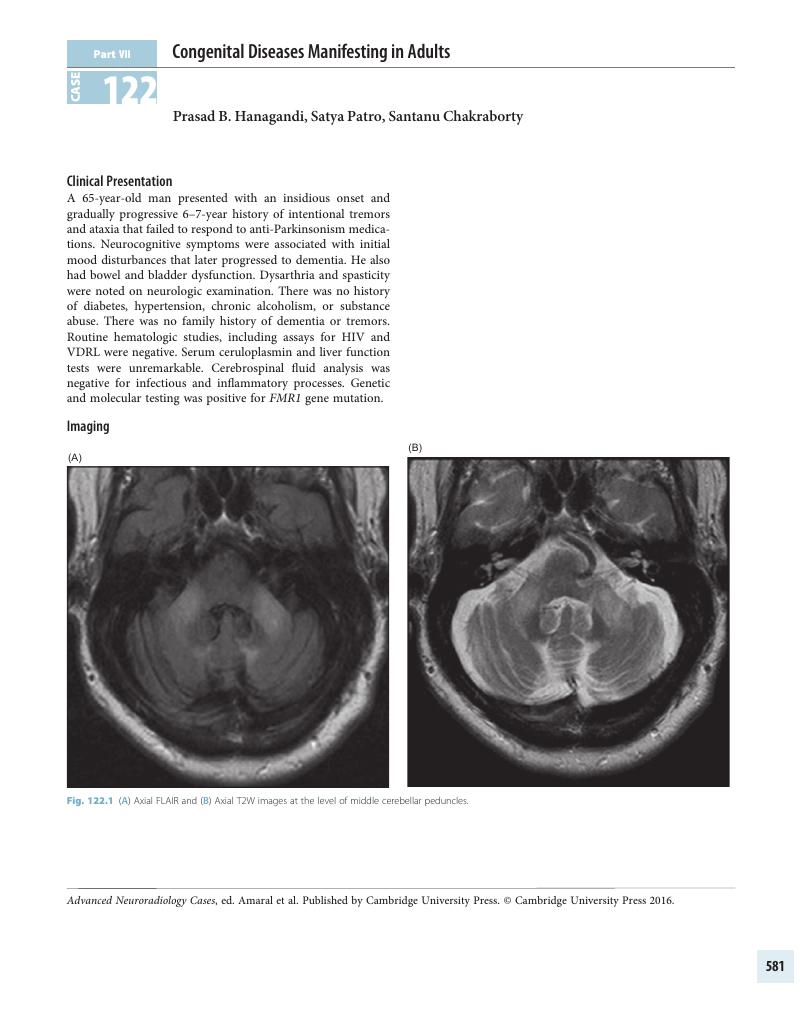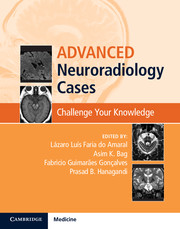Book contents
- Frontmatter
- Contents
- List of chapters with case titles
- List of contributors
- Foreword 1
- Foreword 2
- Preface
- Acknowledgements
- How to Use This Book
- Part I Neurodegenerative Diseases
- Part II Neurovascular Diseases
- Part III Neuroinfectious Diseases
- Part IV Neuroinflammatory Diseases
- Part V Metabolic Diseases Involving Central Nervous System
- Part VI Central Nervous System Tumors
- Part VII Congenital Diseases Manifesting in Adults
- 118 Lázaro Luís Faria do Amaral, Auro Augusto Junqueira Côrtes, Leonardo Furtado Freitas, Asim K. Bag
- 119 Prasad B. Hanagandi, Lázaro Luís Faria do Amaral
- 120 Prasad B. Hanagandi, Lázaro Luís Faria do Amaral
- 121 Lázaro Luís Faria do Amaral, Bruno Siqueira Campos Lopes
- 122 Prasad B. Hanagandi, Satya Patro, Santanu Chakraborty
- Part VIII Miscellaneous
- Index
- References
122 - Prasad B. Hanagandi, Satya Patro, Santanu Chakraborty
from Part VII - Congenital Diseases Manifesting in Adults
Published online by Cambridge University Press: 06 January 2017
- Frontmatter
- Contents
- List of chapters with case titles
- List of contributors
- Foreword 1
- Foreword 2
- Preface
- Acknowledgements
- How to Use This Book
- Part I Neurodegenerative Diseases
- Part II Neurovascular Diseases
- Part III Neuroinfectious Diseases
- Part IV Neuroinflammatory Diseases
- Part V Metabolic Diseases Involving Central Nervous System
- Part VI Central Nervous System Tumors
- Part VII Congenital Diseases Manifesting in Adults
- 118 Lázaro Luís Faria do Amaral, Auro Augusto Junqueira Côrtes, Leonardo Furtado Freitas, Asim K. Bag
- 119 Prasad B. Hanagandi, Lázaro Luís Faria do Amaral
- 120 Prasad B. Hanagandi, Lázaro Luís Faria do Amaral
- 121 Lázaro Luís Faria do Amaral, Bruno Siqueira Campos Lopes
- 122 Prasad B. Hanagandi, Satya Patro, Santanu Chakraborty
- Part VIII Miscellaneous
- Index
- References
Summary

- Type
- Chapter
- Information
- Advanced Neuroradiology CasesChallenge Your Knowledge, pp. 581 - 586Publisher: Cambridge University PressPrint publication year: 2016



